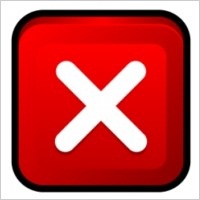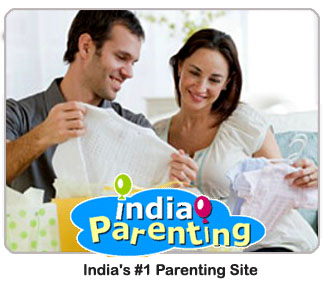 Name: Rebecca Furth
Name: Rebecca Furth
Cloth Diapering In US
I have seen a lot of questions about cloth diapering from Indian parents residing in or going to the US. Here is some information and resources for Indian parents interested in starting or continuing cloth diapering in the US.
I am an American cloth-diapering-mother married to an Indian currently living in India. I was surprised in the US when many of my Indian women friends said that they HAD to use disposables in the US because cloth just wasn't practical. One friend, an environmentalist who was really pro-cloth, said she couldn't do cloth because the winter months were too cold. I just didn't get it, many American women do cloth (not the majority, mind you, but a dedicated population), my mother and grandmother used cloth in the cold NE winter, what did winter have to do with it? Now I get it! Indian and American practices in cloth diapering are slightly different. So now that I am somewhat enlightened, let me provide some information that I hope will inspire some Indian parents in the US to keep those cloth nappies, or at least know that they are an option in the US even if you choose disposable.
1. My understanding of Indian cloth diapering (I am sure there are other methods used in India, but this is what I am familiar with): In India, cloth nappies are often large pieces of cotton cloth (pieces of old dotis for example) that are tied around the baby's bottom. At home babies will wear these loose cloth nappies. They often leak, which is no problem on cement or tile floors that are easy to mop up. There is often household help to change nappies, wash nappies and clothes and clean up out-of-nappy mess. Plastic sheets can be used to protect mattresses, and clothes can be frequently changed. If parents are going out, a plastic cover is sometimes put over the cloth nappy.
2. US translation: in the US such as system is not impossible, but one would have to watch out for carpeting. No household help means that those frequent messes, frequent clothes changes, and nappy washing are a whole lot of work for mom and dad (who are already busy and tired). Baby in loose uncovered cloth nappy at night means wet clothes and in winter that = COLD BABY!!! Not a good thing.
3. The prevailing US method. Cloth diapering technology has made many advances in the US in the last 10 years. The traditional prefold diapers are still widely available. They are thick cotton diapers made of many layers of soft cotton. They are rectangular and they are wrapped on your baby and held in place by diaper pins or these new cool Snappi fasteners you can buy online. New cloth diapers that have built in snaps or velcro fasteners and work much like disposables in the way they are shaped and put on are also available. They are called fitted diapers. Fitted diapers come in cotton, but also cotton and polyester mix; they cost A WHOLE LOT MORE than the traditional rectangular pre-fold diapers, but some people love them. Some companies are also now making all in one nappies, which are the cotton fitted nappy and cover made together. Whether using pre-fold or the new fitted nappies, most American mothers always cover the cloth diaper with a diaper wrap (cover), even when at home (hence the market for the all-in-one diapers). With a secure diaper wrap, baby's clothes stay dry = fewer clothes changes, baby stays warm even on winter nights, and carpets stay clean. This also means a lot less washing.
4. How to wash cloth nappies in the US. In some cities diaper washing companies are still active. For a monthly fee, they provide the diapers and a diaper bin, pick up the dirty diapers once a week and exchange them for freshly cleaned diapers. This is a good option for many parents, but it can be costly and some companies use bleach in the wash, which is not environmentally friendly (check with the company to find out how they wash diapers).
Washing at home is also a viable option and is not as difficult as some may think. Diapers can be washed every day or every three days, depending on your system and desire. In the US, I used a dry bucket with a plastic bag in it. I dropped the diapers in without even rinsing (baby was breastfed and not on solids yet = runny stools easy to wash). Then every 2 days I washed the nappies in a HOT water wash in the washing machine on the cotton-sturdy cycle. I sometimes put them through a second rinse with a little vinegar in the water. Vinegar takes out any remaining residue from the detergent and helps keep the diapers absorbent. It also helps with odors. Once washed, I threw the diapers in the clothes dryer on high heat. The diapers probably equaled 4 additional loads of laundry a week, but never seemed like a big deal. In India, I only have cold water wash, so I drop the dirty nappies into a bucket of water with a little detergent in it and wash them every morning (rinsing them in the bucket before shifting them to the machine) then I hanging them in the sun to dry. Also, not a big deal.
5. Where to buy cloth nappies and nappy covers in the US: BabiesRus, Target and other big stores have some cloth nappies, but the quality and selection are not great and they tend to be expensive. I found the best products, the best deals and the easiest shopping online: see additional resources below.
6. Additional Resources: For information about cloth diapering, washing, products etc. and links to sites that sell cloth diapers and diaper accessories try:
The Diaper Hyena site = thediaperhyena(dot)com. A site with information and links to retailers. I found it very useful. Also
Soft Cloth Bunz = softclothbunz(dot)com (retailer)
Cotton Bottoms = cottonbottoms(dot) com (retailer)
Mother-ease = mother-ease(dot)com, company and retailer of mother-ease diapers
Bummis = bummis(dot)com, cloth diaper company, has good wraps
Imse Vimse = imsevimse(dot)se, Swedish cloth diaper company has some good quality products that you can buy through US online retailers (click on the UK flag for English)
Rumpsters = rumpsters(dot)comAmerican cloth diaper company has organic and all natural products (quite expensive but nice)
There are also some good articles that address the economic costs of disposables versus cloth, the environmental impact of disposable versus cloth, and health issues related to disposable versus cloth. Cloth aren't perfect, they have environmental and labor costs, so do some research and find out where your comfort zone is. Check out the following links.
















